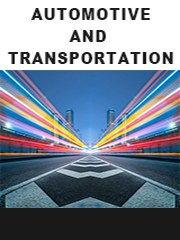Report overview
A sensor is a device that detects changes in its environment by picking stimulus changes and sending this data to the system electronically. It is designed to detect physical, chemical, and process changes in an environment. A chassis sensor is ideally used to detect the wheel position to enable closed-loop chassis control. The chassis sensor is mounted between the chassis and the sprung components to measure the vehicle suspension travel. Other applications of chassis sensors include the pedal position, transmission gear selection, and adaptive headlight aiming systems.
This report aims to provide a comprehensive presentation of the global market for Automotive Chassis Application Sensors, with both quantitative and qualitative analysis, to help readers develop business/growth strategies, assess the market competitive situation, analyze their position in the current marketplace, and make informed business decisions regarding Automotive Chassis Application Sensors. This report contains market size and forecasts of Automotive Chassis Application Sensors in global, including the following market information:
Global Automotive Chassis Application Sensors Market Revenue, 2018-2023, 2024-2035, ($ millions)
Global Automotive Chassis Application Sensors Market Sales, 2018-2023, 2024-2035, (Units)
Global top five Automotive Chassis Application Sensors companies in 2022 (%)
The global Automotive Chassis Application Sensors market was valued at US$ 3438.5 million in 2022 and is projected to reach US$ 3922.5 million by 2035, at a CAGR of 1.9% during the forecast period. The influence of COVID-19 and the Russia-Ukraine War were considered while estimating market sizes.
Passenger car segement is expected to hold the largest share of the automotive sensors market in 2017.
We surveyed the Automotive Chassis Application Sensors manufacturers, suppliers, distributors and industry experts on this industry, involving the sales, revenue, demand, price change, product type, recent development and plan, industry trends, drivers, challenges, obstacles, and potential risks.
Total Market by Segment:
Global Automotive Chassis Application Sensors Market, by Type, 2018-2023, 2024-2035 ($ Millions) & (Units)
Global Automotive Chassis Application Sensors Market Segment Percentages, by Type, 2022 (%)
Electromagnetic Suspension
Air Suspension
Global Automotive Chassis Application Sensors Market, by Application, 2018-2023, 2024-2035 ($ Millions) & (Units)
Global Automotive Chassis Application Sensors Market Segment Percentages, by Application, 2022 (%)
Passenger Car
Commercial Vehicle
Global Automotive Chassis Application Sensors Market, By Region and Country, 2018-2023, 2024-2035 ($ Millions) & (Units)
Global Automotive Chassis Application Sensors Market Segment Percentages, By Region and Country, 2022 (%)
North America
US
Canada
Mexico
Europe
Germany
France
U.K.
Italy
Russia
Nordic Countries
Benelux
Rest of Europe
Asia
China
Japan
South Korea
Southeast Asia
India
Rest of Asia
South America
Brazil
Argentina
Rest of South America
Middle East & Africa
Turkey
Israel
Saudi Arabia
UAE
Rest of Middle East & Africa
Competitor Analysis
The report also provides analysis of leading market participants including:
Key companies Automotive Chassis Application Sensors revenues in global market, 2018-2023 (Estimated), ($ millions)
Key companies Automotive Chassis Application Sensors revenues share in global market, 2022 (%)
Key companies Automotive Chassis Application Sensors sales in global market, 2018-2023 (Estimated), (Units)
Key companies Automotive Chassis Application Sensors sales share in global market, 2022 (%)
Further, the report presents profiles of competitors in the market, key players include:
Bosch
Continental
DENSO
Infineon Technologies
Sensata Technologies
Delphi
NXP Semiconductors
TE Connectivity
STMicroelectronics
Amphenol
EPCOS
Allegro Microsystems
Outline of Major Chapters:
Chapter 1: Introduces the definition of Automotive Chassis Application Sensors, market overview.
Chapter 2: Global Automotive Chassis Application Sensors market size in revenue and volume.
Chapter 3: Detailed analysis of Automotive Chassis Application Sensors manufacturers competitive landscape, price, sales and revenue market share, latest development plan, merger, and acquisition information, etc.
Chapter 4: Provides the analysis of various market segments by type, covering the market size and development potential of each market segment, to help readers find the blue ocean market in different market segments.
Chapter 5: Provides the analysis of various market segments by application, covering the market size and development potential of each market segment, to help readers find the blue ocean market in different downstream markets.
Chapter 6: Sales of Automotive Chassis Application Sensors in regional level and country level. It provides a quantitative analysis of the market size and development potential of each region and its main countries and introduces the market development, future development prospects, market space of each country in the world.
Chapter 7: Provides profiles of key players, introducing the basic situation of the main companies in the market in detail, including product sales, revenue, price, gross margin, product introduction, recent development, etc.
Chapter 8: Global Automotive Chassis Application Sensors capacity by region & country.
Chapter 9: Introduces the market dynamics, latest developments of the market, the driving factors and restrictive factors of the market, the challenges and risks faced by manufacturers in the industry, and the analysis of relevant policies in the industry.
Chapter 10: Analysis of industrial chain, including the upstream and downstream of the industry.
Chapter 11: The main points and conclusions of the report.
